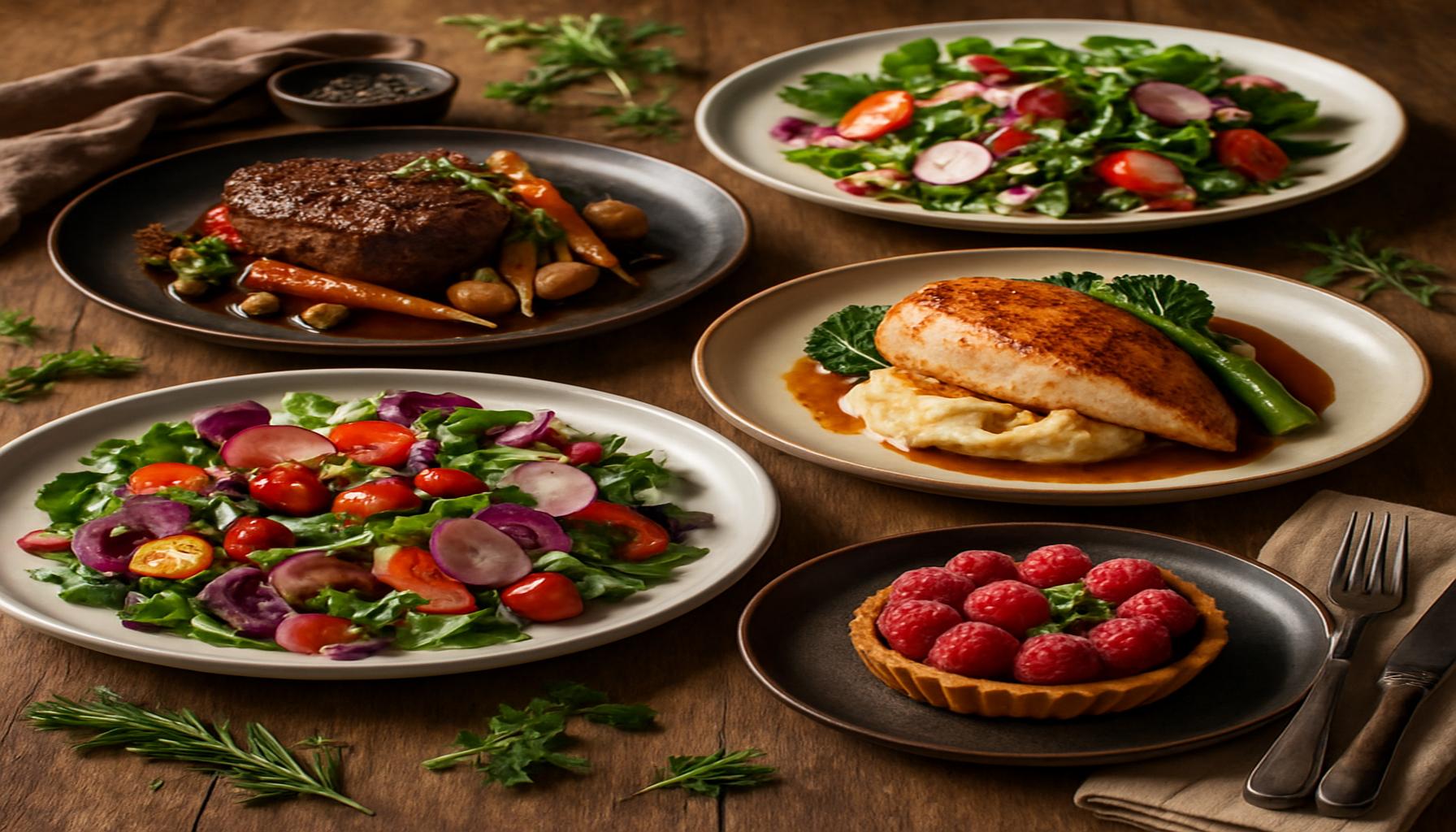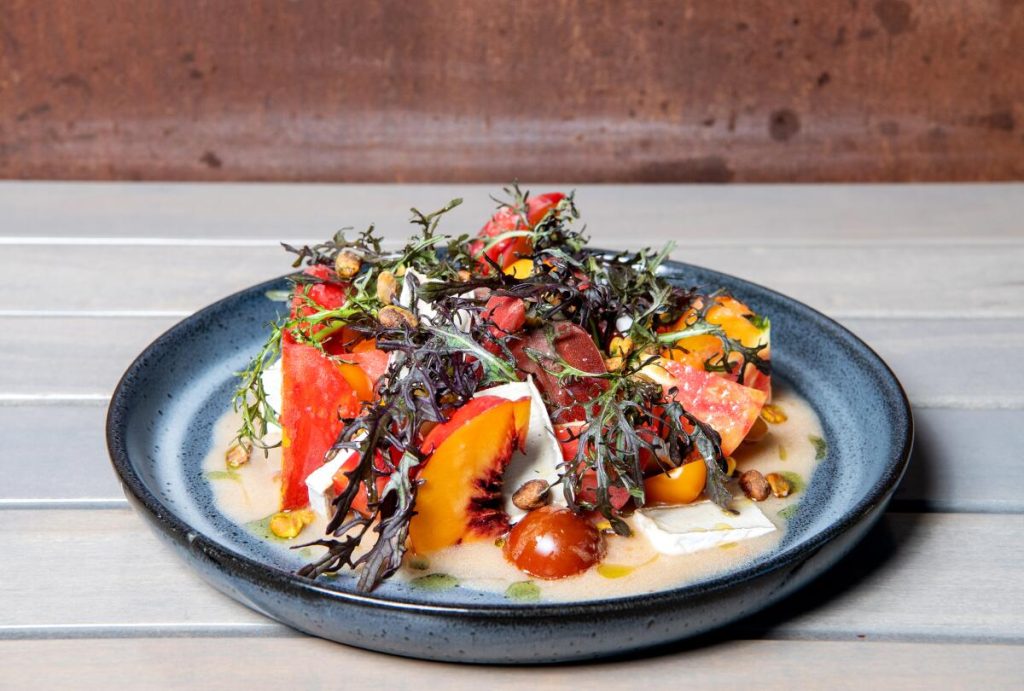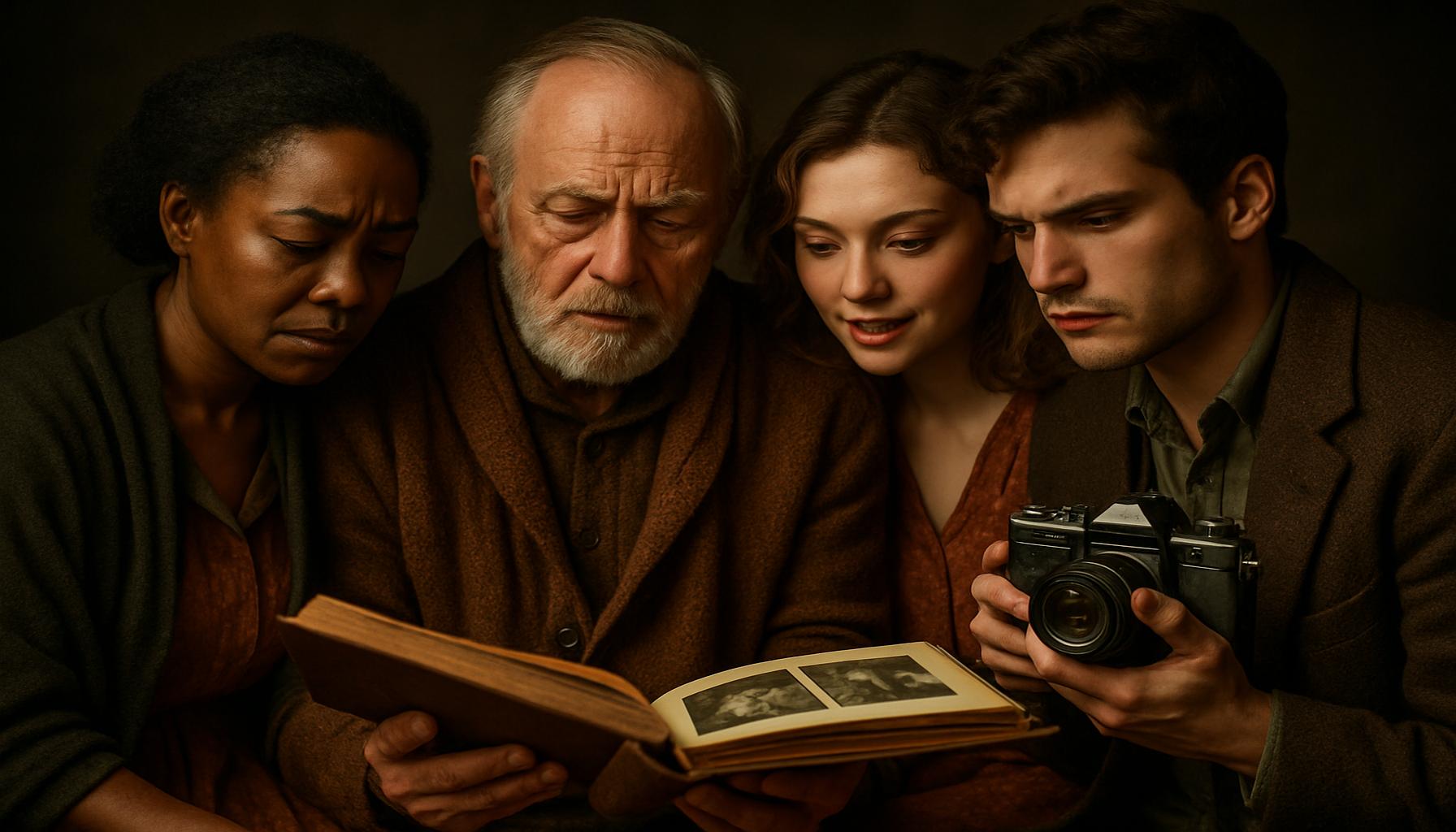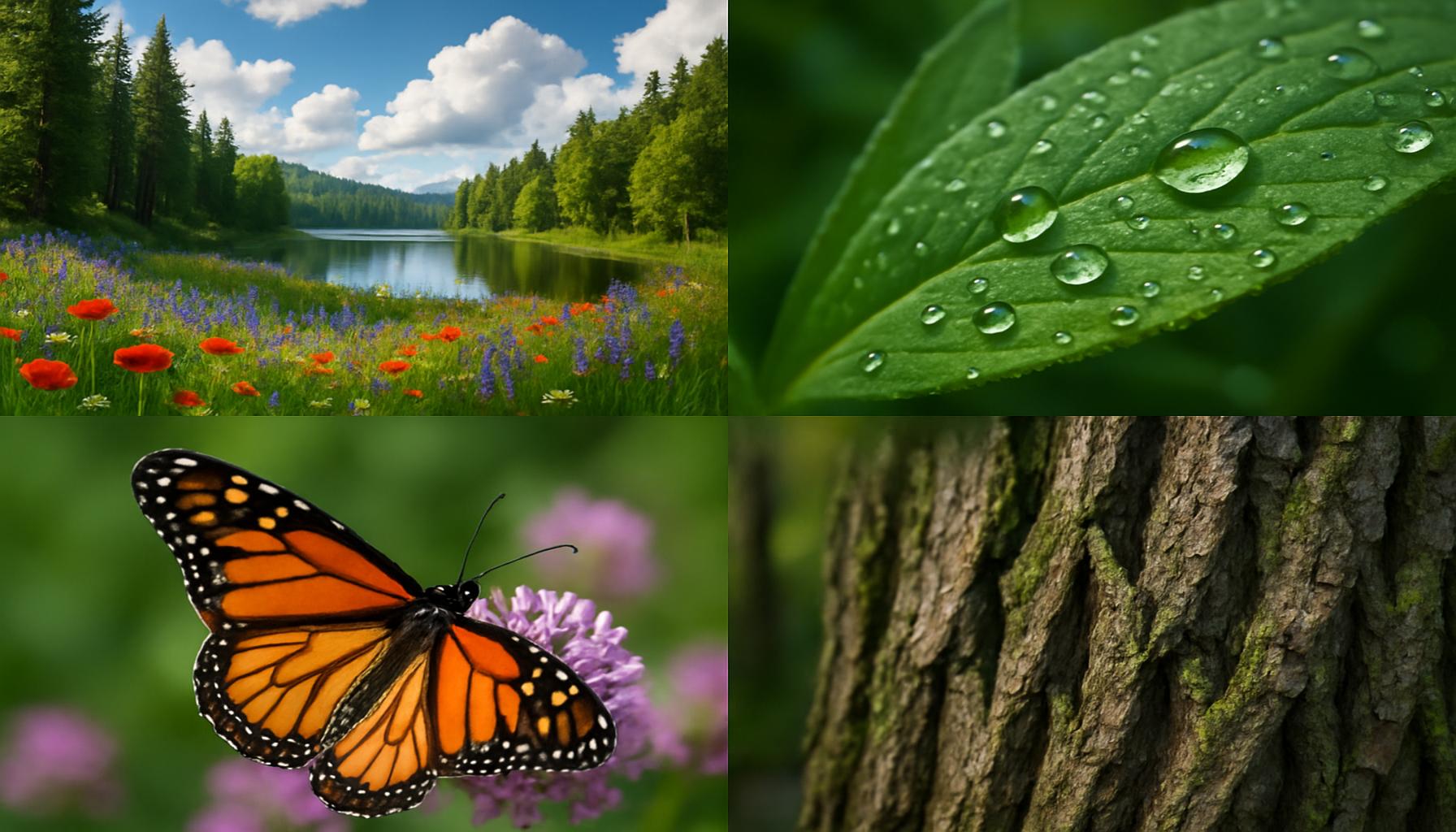Food Photography: The Art of Transforming Dishes into Irresistible Images

Understanding the Art of Food Photography
In today’s digital landscape, food photography has emerged as a vital skill for chefs, restaurateurs, and food enthusiasts alike. The ability to capture the essence of a dish and make it visually irresistible is an art that combines creativity, technique, and a profound understanding of gastronomy. Stunning food photography not only showcases the culinary creations but also communicates the story behind each meal, enticing viewers to experience the flavors and aromas.
As we delve into this captivating field, let’s examine several key elements that greatly contribute to the production of stunning food photography:
- Lighting: The importance of natural light in food photography cannot be overstated. Soft, diffused natural light, particularly from early morning or late afternoon sunlight, enhances textures and colors, making dishes appear fresh and inviting. For instance, when photographing a vibrant salad, the greens will appear more lush and appealing under natural light as opposed to harsh artificial lighting, which can create unflattering shadows.
- Composition: The arrangement of food, props, and backgrounds plays a significant role in the visual impact of the image. Different composition techniques, such as the rule of thirds or using leading lines, can guide the viewer’s eye through the image. For example, a rustic wooden table can serve as a beautiful backdrop for a warm bowl of soup, while colorful garnishes sprinkled around the dish can create a more dynamic composition.
- Styling: This involves more than just how food is plated; it includes the careful selection of garnishes and the way elements are oriented on the plate. A simple dish like spaghetti can be transformed into a visual masterpiece with the addition of fresh basil, a sprinkle of grated Parmesan, and a drizzle of olive oil. Attention to detail in styling can elevate ordinary meals into artful creations.
From mouthwatering close-ups of decadent desserts to sprawling tablescapes adorned with seasonal produce, each photograph tells a unique story. For example, a striking image of a baked apple pie can evoke memories of family gatherings during Thanksgiving, while an intricate layer cake can spark interest for a birthday celebration. Understanding the nuances of food photography can lead to breathtaking images that not only draw audiences in but also evoke cravings and inspire culinary exploration.
Join us as we explore essential tips, professional techniques, and inspiring examples that can help you transform everyday dishes into irresistible images that captivate and inspire. Discover how to make your culinary creations not just edible, but also visually delightful, bringing a new dimension to your food presentation. With practice and creativity, anyone can master the art of food photography and bring their culinary narratives to life through striking and appetizing visuals.
DIVE DEEPER: Click here to uncover the emotions behind colors

Essential Techniques for Captivating Food Photography
As the art of food photography continues to evolve, mastering a few essential techniques can significantly enhance your ability to create stunning visuals. Whether you are an amateur enthusiast or a seasoned professional, understanding the technical aspects of photography and how to apply them in the culinary world can make all the difference. Here are some vital techniques that can help you capture flavorful dishes in a way that tantalizes viewers:
- Camera Settings: Familiarizing yourself with your camera settings is crucial to achieving the best results in food photography. Adjusting key parameters, such as aperture, shutter speed, and ISO, allows you to control the exposure and depth of field of your images. A lower aperture (e.g., f/2.8) creates a beautiful blurred background, helping the main subject stand out, while a higher aperture (e.g., f/8) maintains a clearer focus on multiple elements within the frame.
- Angles: The angle at which you shoot can dramatically alter the perception of your dish. Common angles include overhead shots (flat lay), 45-degree angles, and eye-level perspectives. For instance, a bowl of ramen might look most appealing from a 45-degree angle, revealing the array of toppings, while a multi-layered cake dazzles under a flat lay, showcasing its meticulous details. Experimenting with various angles can bring uniqueness and a fresh perspective to your images.
- Background and Props: Selecting the right background and props is essential for creating a compelling visual narrative. Minimalist backgrounds, such as plain white plates or wooden tables, can help emphasize the food as the focal point. Moreover, incorporating props like utensils, tablecloths, or flowers can introduce emotion and storytelling elements. For example, shooting a fresh seafood platter against a backdrop of weathered driftwood not only accentuates the natural essence of the dish but also hints at its maritime origins.
Beyond the technical elements, the emotional connection that food photography can evoke is powerful. A beautifully captured image of a freshly baked loaf of bread can stir feelings of warmth and comfort, while a vibrant summer salad can suggest freshness and vitality. By incorporating sensory elements into your photography, you can engage your audience’s memories and aspirations, making them crave the experience your dish can offer.
Ultimately, food photography is not just about taking pictures; it’s about telling a story through composition, lighting, styling, and the emotion behind the food. As you refine your photography skills, remember that practice makes perfect. Snap away at every opportunity, experimenting with different techniques, and watch as you transform not just your dishes but also the way they are perceived through the lens. Each click of the shutter brings you one step closer to mastering this enchanting art form.
| Advantage | Description |
|---|---|
| Enhanced Visual Appeal | Food photography transforms everyday dishes into works of art, elevating their presentation to attract more viewers. |
| Increased Engagement | High-quality food images increase interaction on social media platforms, encouraging shares and expanding reach. |
| Brand Identity | Exceptional food photography helps restaurants and food brands establish a unique identity that resonates with their audience. |
| Storytelling | Each image communicates a story about the dish, inspiring emotions and cravings that plain descriptions often fail to convey. |
Incorporating these elements into food photography can significantly influence how dishes are perceived. Professional food photographers utilize various techniques, like lighting, composition, and styling, to amplify the dish’s allure. For instance, using natural light enhances the colors and textures of the ingredients, making the images more inviting. Various angles can also dramatically change the perception of a dish — a top-down view might be perfect for flat-lays, while a side angle helps showcase the height and components of layered desserts.Moreover, food styling is equally important. Simple garnishes or strategic placements can turn a mundane meal into a feast for the eyes. The art of food photography doesn’t just serve to document a dish; it cultivates an entire experience around it. With the rise of food blogs and social media, the demand for captivating food photography continues to surge, compelling both amateur and professional photographers to refine their skills to meet the expectations of a visually driven audience. Let your imagination and creativity flow as you delve into the realm of food photography!
DISCOVER: Click here to unlock the secrets of storytelling
Styling Your Dishes for the Perfect Shot
In the world of food photography, styling is just as crucial as capturing the image itself. The way a dish is presented can alter its appeal dramatically, and great styling can transform a simple meal into a gourmet experience. Understanding the principles of styling will allow you to create compositions that not only look magazine-worthy but also evoke the emotions tied to the food. Here are a few essential styling tips:
- Color Harmony: Color plays a significant role in how appetizing food appears in photos. Aim for a harmonious blend of colors by pairing contrasting shades that complement the dish. For example, a vibrant red tomato on a bed of crisp, green lettuce can create a visually striking image. Consider using seasonal ingredients that naturally reflect a palette appropriate to the time of year—think warm, earthy tones for autumn dishes or vivid pastels for springtime meals.
- Texture and Layers: The texture of food should not be underestimated. Incorporating various textures can add depth to your images. Consider creating layers with your ingredients; for a parfait, for instance, alternate layers of yogurt, granola, and berries to create an enticing vertical composition. Additionally, incorporating garnishes such as fresh herbs, nuts, or edible flowers can provide that extra pop, enhancing both texture and aesthetics.
- Crop and Composition: Framing your shot is vital in highlighting the most appealing aspects of a dish. The rule of thirds—a principle that involves splitting your frame into thirds both horizontally and vertically—can guide you in placing your subject for maximum impact. However, don’t shy away from breaking these rules for creative expression. Use negative space intentionally to draw the eye to the food, allowing other elements in the frame to accentuate the main dish without overwhelming the viewer.
Furthermore, lighting remains a pivotal element in the styling process. Natural light is often considered the best option for food photography, as it creates a soft and inviting glow that artificial light can struggle to replicate. Positioning your dish near a window can provide diffuse sunlight, highlighting the dish without harsh shadows. For more controlled lighting, consider investing in softboxes or reflectors to manipulate shadows and enhance colors.
The Importance of Storytelling through Imagery
Beyond technical skills and styling, food photography is, at its core, about storytelling. Each image should convey a narrative that evokes emotions and draws the audience into the experience. Think about the story behind each dish: is it a family recipe passed down through generations, or an innovative fusion that showcases culinary trends? Capturing the essence of this narrative within a single frame can resonate profoundly with viewers.
Furthermore, including context in your shots—such as a rustic kitchen setting or a bustling café—can provide a sense of place. This not only makes the food more relatable but can also reflect cultural backgrounds and traditions, enriching the story you’re telling through your images.
Incorporating these styling and storytelling techniques into your food photography will not only enhance your technical skills but also enable you to convey the essence of your culinary creations. Experiment with different approaches, and don’t hesitate to tell the world about your dishes in a way that stirs the imagination and palate alike.
DISCOVER MORE: Click here to delve into the world of intuitive painting
Conclusion
In conclusion, the realm of food photography is a multidimensional art that transcends mere image capture; it invites viewers to dive into a rich tapestry of flavors and emotions that each dish embodies. By mastering the techniques of styling, leveraging color harmony, experimenting with texture, and thoughtfully composing your shots, you can transform ordinary meals into visually enticing masterpieces. Remember, the goal is not just to photograph food but to create an engaging narrative that resonates with your audience.
As you explore the nuances of lighting and environment, keep in mind that every image tells a story—one that can ignite a sense of nostalgia, curiosity, or even hunger within your viewers. By integrating the aesthetics of your culinary creations with a backdrop that reflects their origin, you enhance the authenticity and relatability of your photographs. Consider what emotions you wish to evoke and how your background can support that narrative, whether it be through a cozy kitchen setting or a lively restaurant atmosphere.
Ultimately, the art of food photography is about creativity and experimentation. Don’t shy away from trying new angles, props, or editing techniques to develop your unique style. As you refine your skills, your passion for food and storytelling will shine through in your work, captivating audiences and inviting them to savor not just the image but the journey behind it. Embrace this creative adventure, as each delectable capture offers the opportunity to inspire and entice those who view it.



